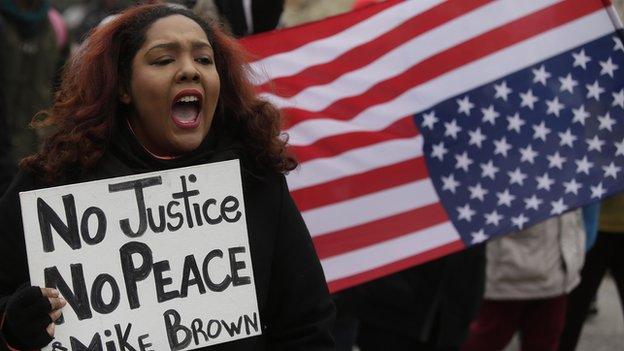Viewpoint: Why Eric Garner was blamed for dying
- Published
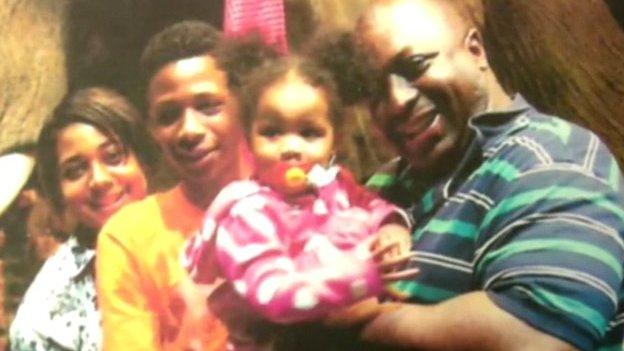
Eric Garner and his family
In the wake of several high-profile cases involving black Americans killed after encounters with the police, writers Stacey Patton and David J Leonard examine why blame is often shifted to the deceased.
Last week a Staten Island grand jury concluded that no crime was committed when an NYPD officer choked 43-year-old Eric Garner to death in broad daylight. Never mind what we all have seen on the video recording; his pleas, and his pronouncement, "I can't breathe."
So what if the medical examiner ruled it a homicide? An unfortunate tragedy for sure, but not a crime.
In fact, in the eyes of many, external, it was Garner's own fault.
Footage of the arrest sparked national outrage - Nick Bryant reports
"You had a 350lb (158.8kg) person who was resisting arrest. The police were trying to bring him down as quickly as possible," New York Representative Peter King, external told the press. "If he had not had asthma and a heart condition and was so obese, almost definitely he would not have died."
This sort of logic sees Garner's choices as the reasons for his death. Everything is about what he did. He had a petty criminal record with dozens of arrests, he (allegedly) sold untaxed cigarettes, he resisted arrest and disrespected the officers by not complying.
According to Bob McManus, a columnist for The New York Post, external, both Eric Garner and Michael Brown, the teenager shot dead by a police officer in Ferguson Missouri, "had much in common, not the least of which was this: On the last day of their lives, they made bad decisions. Especially bad decisions. Each broke the law - petty offenses, to be sure, but sufficient to attract the attention of the police. And then - tragically, stupidly, fatally, inexplicably - each fought the law."
If only we turned our attention on those who are responsible. Had Officer Daniel Pantaleo not choked Eric Garner, the father and husband would be alive today.
Had Officer Pantaleo listened to his pleas, Garner would be alive today.
Had the other four officers interceded, Garner would be alive today.
There is plenty of blame to go around. The NYPD's embrace of stop-and-frisk policies, external rooted in the "broken windows, external" method of policing is a co-conspirator worthy of public scrutiny and outrage.
Yet, we focus on Eric Garner's choices.
Such victim-blaming is central to white supremacy.
Emmett Till should not have whistled, external at a white woman.
Amadou Diallo should not have reached for his wallet, external.
Trayvon Martin should not have been wearing a hoodie.
Jonathan Ferrell should not have run toward the police, external after getting into a car accident.
Renisha McBride should not have been drinking, external or knocked on a stranger's door for help in the middle of the night.
Jordan Davis should not have been playing loud rap music, external.
Michael Brown should not have stolen cigarillos or allegedly assaulted a cop, external.
The irony is these statements are made in a society where white men brazenly walk around with rifles and machine guns, citing their constitutional right to do so when confronted by the police.
Look at the twitter campaign "#CrimingWhileWhite" to bear witness to all the white law-breakers who lived to brag about the tale.
Just think about the epidemic of white men, external who walk into public spaces, open fire and still walk away with their lives. In those cases, we are told we must understand "why" and change laws or mental health system to make sure it never happens again.
Crowds gathered in New York to protest against the grand jury's decision
The audacity of whiteness and anti-black racism is condemning black bodies for their own deaths, while seeking understanding for white criminals.
No matter the situation or circumstance, throughout US history the devaluing of black life can be seen in the failure to prosecute police officers, lynch mobs, freelance vigilantes, and others empowered to protect white supremacy because the deaths of their black victims were seen as self-inflicted.
The practice of blaming blacks for their own killings is not reserved for adults.
Last month 12-year old Tamir Rice was killed by police who opened fired seconds after arriving at the scene.
Rice was blamed for playing with a toy gun outside a recreation centre in Cleveland, Ohio. A 911-caller said he kept taking the gun in and out of his pocket and scaring people with it.
Not even a day after Rice was killed, his parents' criminal records and parenting decisions were front-page news. An early news story made references to his mother's past drug charges, external, another focused on Tamir Rice's father's, external history of violence against women.
The implication was clear: Tamir grew up in a family of "criminals" and therefore it is no wonder he died. Never mind that he was the victim, never mind his parent's grief, never mind that his killer, Timothy A Loehmann was deemed unfit for police work, external in 2012.
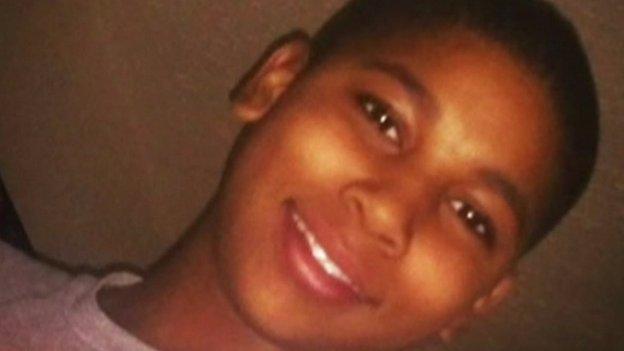
Tamir Rice was shot by police on Saturday afternoon and died in hospital early on Sunday morning
In the aftermath of these racially charged killings there's a predictable pattern of putting victims on trial in the media, in district attorney's offices, and in the court of public opinion.
This post-mortem narrative discredits the victims and feeds popular myths about black people as innately criminal, violent, and so deeply flawed that their lives are worthless.
Pinning the blame on the victims reinforces ideas of a post-racial America and racial progress.
It normalizes inequality and police-on-black violence.
It limits public sympathy and outrage since "they did it to themselves."
It limits responsibility and complicity of not only the police but also those sitting in the halls of political power.
It ignores larger history and a pattern of systemic violence.
It stifles conversations about implicit bias and systemic racism.
It undermines conversations about state violence and overzealous policing.
Rather than account for racism, or hold the perpetrator, society, and its stained racial history accountable, this racial gag reflex places blame inside of all too many coffins.
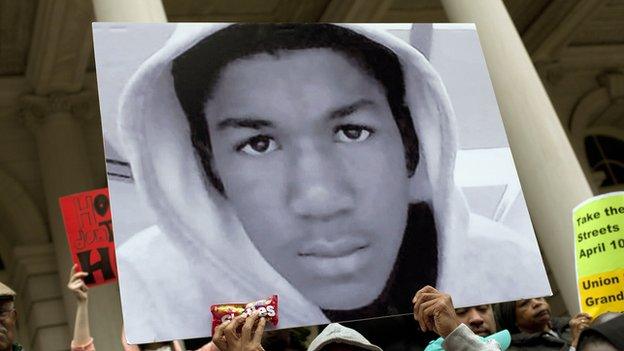
Trayvon Martin's hoodie was seen as "suspicious" by some
The efforts to blame the Eric Garners and Tamir Rices is not just about exonerating the police but pathologising blacks so white America can preserve its racial fantasies.
Ultimately, it is about absolving the fundamental inequality of how black people are perceived and treated in America.
They are assumed to be criminal, less intelligent, less worthy.
In America, black lives don't matter because white supremacy requires black death, and it requires that its victims die without sanctuary.
Stacey Patton is a senior enterprise reporter for The Chronicle of Higher Education and the author of That Mean Old Yesterday. Follow her on Twitter @DrStaceyPatton, external.
David J Leonard is an associate professor in the department of critical culture, gender and race studies at Washington State University, Pullman. Follow him on Twitter @drdavidjleonard, external.
- Published3 December 2014

- Published21 August 2014
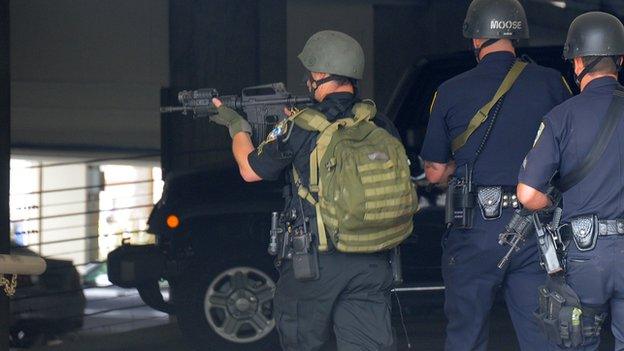
- Published2 December 2014
